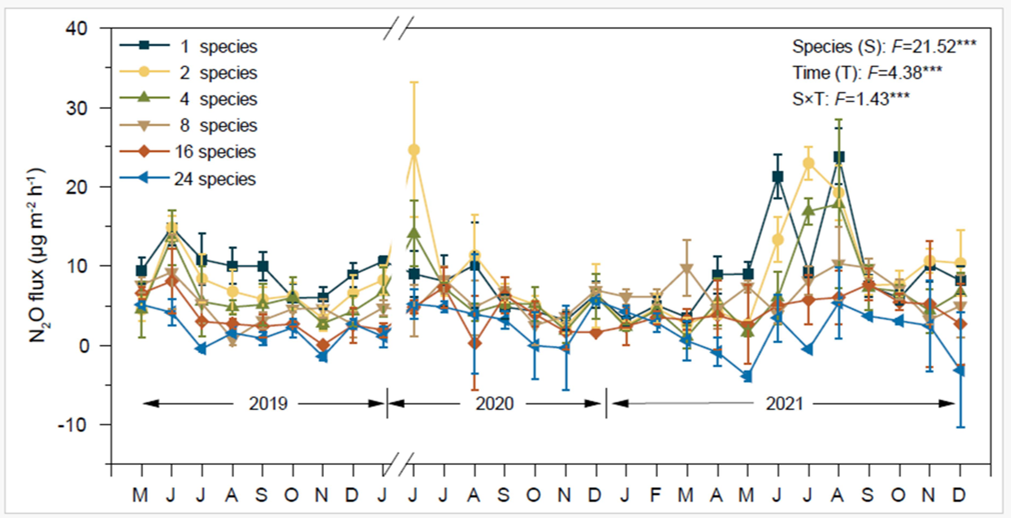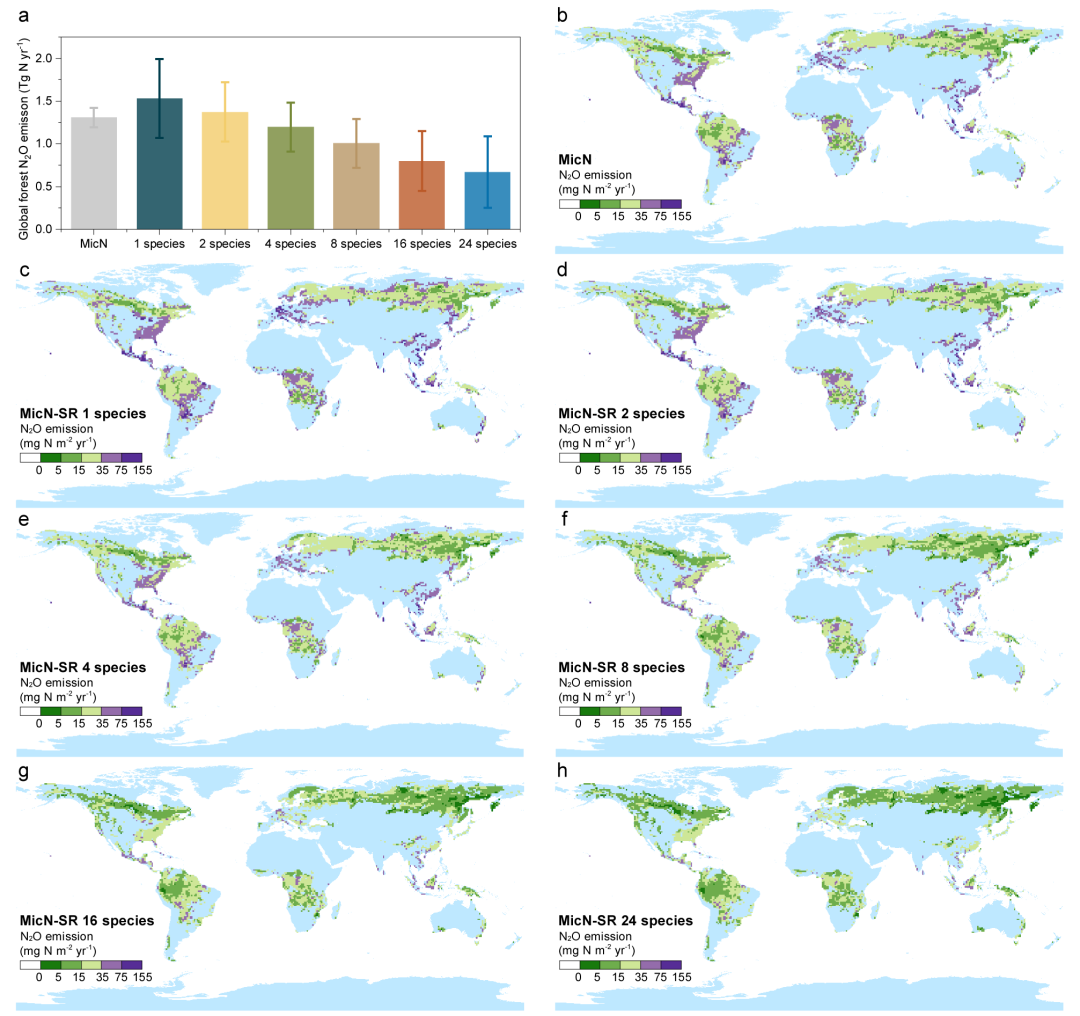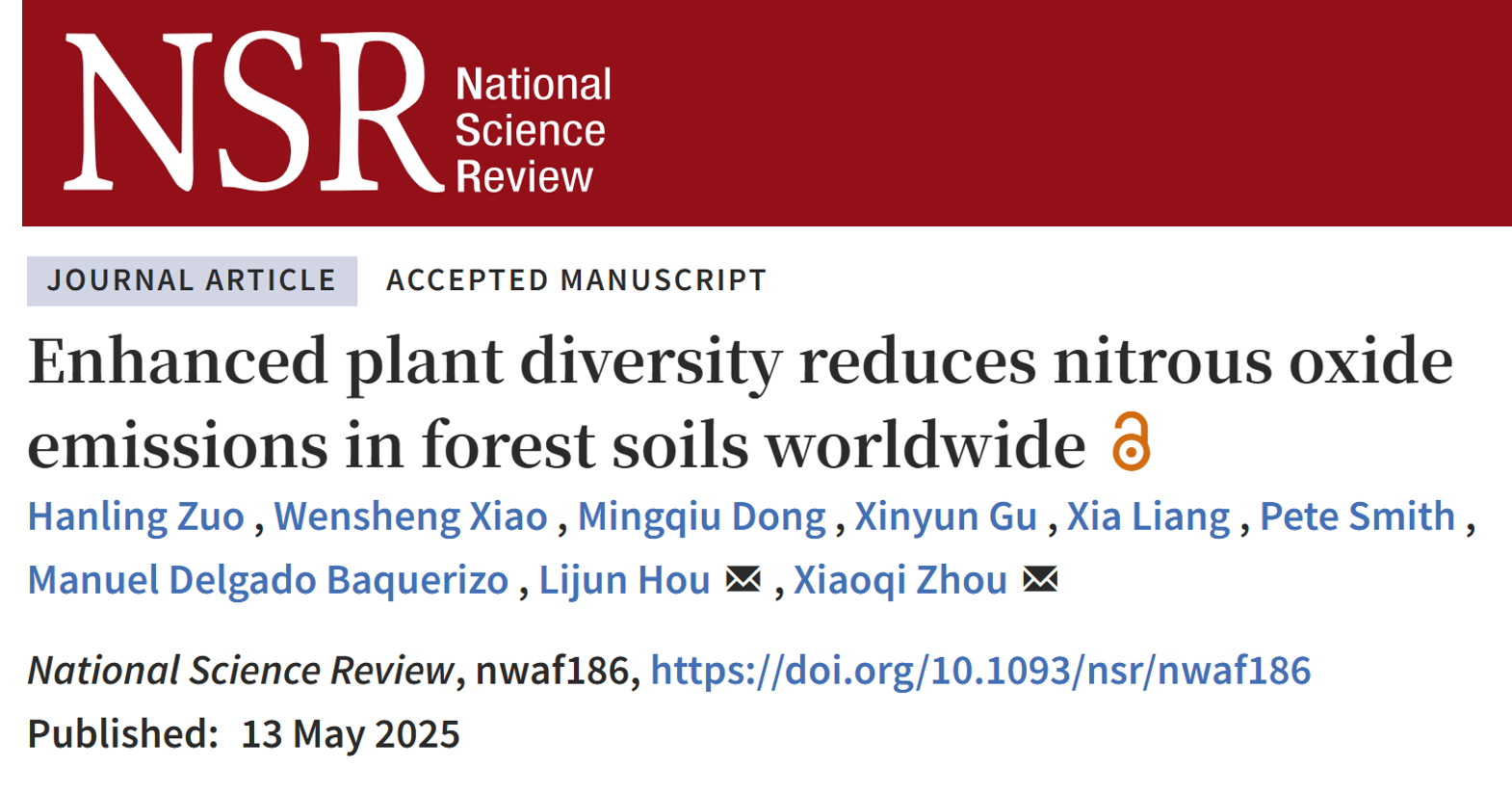Forests are recognized as the largest natural source of nitrous oxide (N2O) emissions on land, with deforestation drastically reducing the cover and biodiversity of native forests worldwide. Yet, how losses in forest biodiversity affect soil N2O fluxes remains poorly understood. Here, we combined a global tree diversity-forest soil N2O dataset, including 201 paired comparable observations from global forests, with a three years field survey of in-situ fluxes data gathered from a long-term plant diversity field experiment. Our analyses reveal that tree diversity has a significant negative effect on soil N2O emissions, primarily driven by a decrease in N2O production associated with denitrification. More specifically, we showed that reductions in N2O emissions with tree diversity can be attributed to a decrease in the availability of soil inorganic nitrogen. Predictive modeling further shows that compared to single tree species, forests with two tree species can reduce global N2O emissions by 10.39%, while those with 24 tree species achieve the maximum mitigation effect, reducing emissions by 56.30%. Taken together, our work highlights the contribution of tree diversity for mitigating N2O emissions, highlighting the importance of accounting for biodiversity when reforesting old forests, and while supporting new afforestation processes.

Figure 1. Distribution of samping points in the global tree diversity-forest soil N2O fux dataset constructed from meta-analisis and field observation data(a); liner relationship between tree diversity and the effect size of tree diversity on N2O flux(b).

Figure 2. Three-year field observation experiment on the BEF-China platform to investigate the effects of different tree diversity on forest soil N2O fluxes.

Figure 3. Shows the average emission rate of subtropical forests in-situ soil N2O under different tree diversities (a), along with the percentages of N2O production or consumption in the nitrification process, denitrification process, and denitrification reduction process (b).

Figure 4. Model simulation of global forest soil N2O emissions under different tree diversity (a) and spatial distribution patterns of global forest soil N2O emissions: MicN model simulated (b), MicN-SR model simulated single species (c), 2 species (d), 4 species (e), 8 species (f), 16 species (g), 24 species (h).
Literature:
Hanling Zuo, Wensheng Xiao, Mingqiu Dong, Xinyun Gu, Xia Liang, Pete Smith, Manuel Delgado Baquerizo, Lijun Hou*, Xiaoqi Zhou*. 2025. Enhanced plant diversity reduces nitrous oxide emissions in forest soils worldwide. National Science Review. nwaf186. https://academic.oup.com/nsr/advance-article/doi/10.1093/nsr/nwaf186/8129722.

